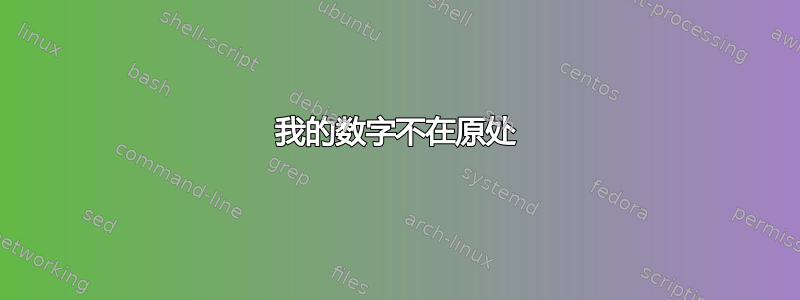
\documentclass{article} % Specifies the document class
\usepackage[pdftex]{graphicx} % To use graphics and insert images
\usepackage[utf8]{inputenc} % handle french é,è etc.
\usepackage[T1]{fontenc}
\graphicspath{ {C:/Users/Ralph/Documents/CiSA/MathPaper/}} % Path for the image
\usepackage{lipsum}
\title{Study of curve formed from a processed quadrilateral} % Declares the document's title.
\author{ME} % Declares the author's name.
\date{April 8, 2015} % Deleting this command produces today's date.
\begin{document}
\maketitle
\section{Introduction}
\lipsum[1]
\section{Methodology}
\subsection{Processing the square}
The initial shape is a square, to produce a closed curve from the initial shape, we follow a list of procedures that we iterate it infinitely.
\begin{figure}
\centering
\includegraphics[scale=0.4]{iter1}
\caption{Initial quadrilateral}
\end{figure}
This list of procedure is like so :
On each side of the square, a middle point is drawn M$_{x}$.
\begin{figure}
\centering
\includegraphics[scale=0.4]{midpoints}
\caption{Initial quadrilateral}
\end{figure}
Then a point in the middle of every pair of adjacent points (A$_{x}$) is drawn. For example there will be one between M$_1$ and A, one between A and M$_2$, etc.
\begin{figure}
\centering
\includegraphics[scale=0.4]{newPoints}
\caption{Initial quadrilateral}
\end{figure}
A polygon is drawn to link all the (A$_{x}$) and it is processed with the same procedure.
\begin{figure}
\centering
\includegraphics[scale=0.4]{newPoly}
\caption{Initial quadrilateral}
\end{figure}
\subsection{Analysis of the curve}
Our first guess was that the infinite process will result in a perfect circle. After doing a few iteration with a simple JavaScript algorithm and the GeoGebra application, we discovered that the shape we get is not a circle.
\begin{figure}
\centering
\includegraphics[scale=0.6]{iter5}
\caption{Initial quadrilateral}
\end{figure}
A simple comparison of the length of g (21.55) and h (22.15), two segments linking the center of the figure with a random point on it, confirms that it is not a circle.
\end{document} % End of document.
我的图像应该出现在描述它们的段落之后(就像在我的代码中一样),但它们都按顺序出现在最后一段之前(简单比较......)。 我的代码有什么问题?
答案1
figure方法漂浮而浮动元素的设计初衷就是浮动。LaTeX 会将它们放置在它认为最合适的位置。如果您不想让它们移动,请不要使用环境figure。您可以使用\captionof来自caption或的命令capt-of来设置标题。
\documentclass{article} % Specifies the document class
\usepackage[demo]{graphicx} % To use graphics and insert images
\usepackage[utf8]{inputenc} % handle french é,è etc.
\usepackage[T1]{fontenc}
\graphicspath{ {C:/Users/Ralph/Documents/CiSA/MathPaper/}} % Path for the image
\usepackage{lipsum}
\usepackage{caption}
\title{Study of curve formed from a processed quadrilateral} % Declares the document's title.
\author{ME} % Declares the author's name.
\date{April 8, 2015} % Deleting this command produces today's date.
\begin{document}
\maketitle
\section{Introduction}
\lipsum[1]
\section{Methodology}
\subsection{Processing the square}
The initial shape is a square, to produce a closed curve from the initial shape, we follow a list of procedures that we iterate it infinitely.
\begin{center}
\includegraphics[scale=0.4]{iter1}
\captionof{figure}{Initial quadrilateral}
\end{center}
This list of procedure is like so :
On each side of the square, a middle point is drawn M$_{x}$.
\begin{center}
\includegraphics[scale=0.4]{midpoints}
\captionof{figure}{Initial quadrilateral}
\end{center}
Then a point in the middle of every pair of adjacent points (A$_{x}$) is drawn. For example there will be one between M$_1$ and A, one between A and M$_2$, etc.
\begin{center}
\includegraphics[scale=0.4]{newPoints}
\captionof{figure}{Initial quadrilateral}
\end{center}
A polygon is drawn to link all the (A$_{x}$) and it is processed with the same procedure.
\begin{center}
\includegraphics[scale=0.4]{newPoly}
\captionof{figure}{Initial quadrilateral}
\end{center}
\subsection{Analysis of the curve}
Our first guess was that the infinite process will result in a perfect circle. After doing a few iteration with a simple JavaScript algorithm and the GeoGebra application, we discovered that the shape we get is not a circle.
\begin{center}
\includegraphics[scale=0.6]{iter5}
\captionof{figure}{Initial quadrilateral}
\end{center}
A simple comparison of the length of g (21.55) and h (22.15), two segments linking the center of the center with a random point on it, confirms that it is not a circle.
\end{document}


